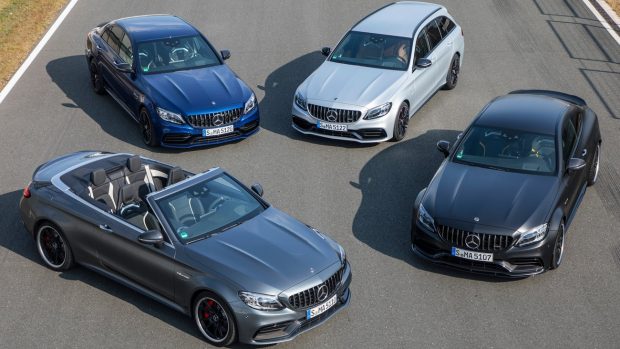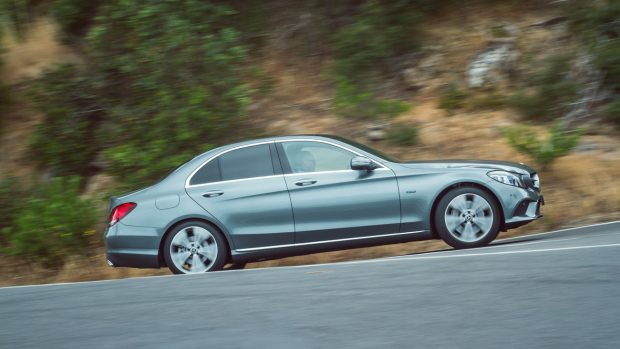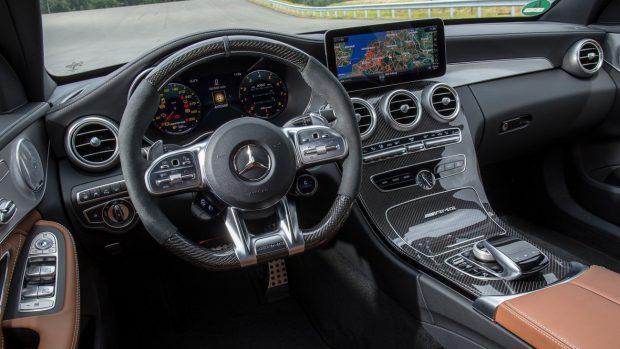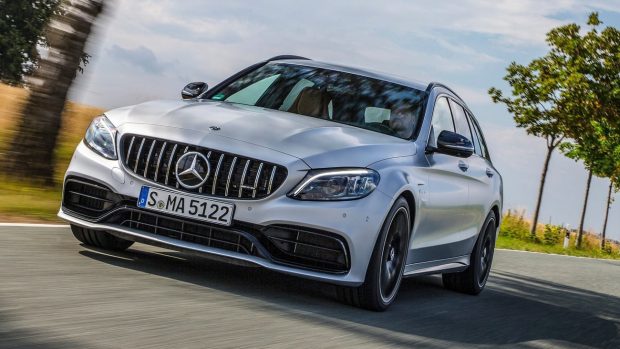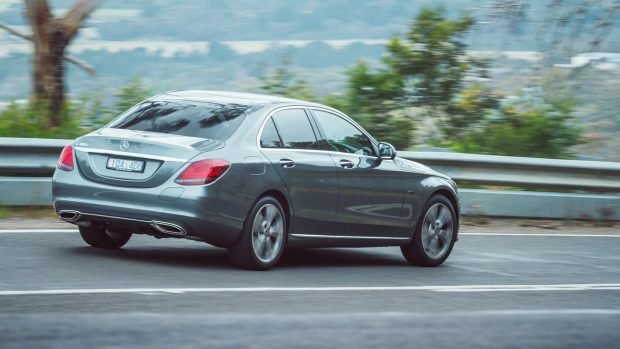-
Car Reviews
- All reviews
- Midsize SUVs
- Small cars
- Utes
- Small SUVs
- Large SUVs
- Large cars
- Sports SUVs
- Sports cars
- Vans
Latest reviews
- Car News
-
Car Comparisons
Latest comparisons
- Chasing Deals
The Mercedes-Benz C-Class continues to be one of the most popular luxury vehicles in Australia. Offered in sedan, station wagon, coupe and convertible forms, it is the entry point to a rear-wheel-drive Mercedes-Benz.
The Mercedes-Benz C-Class continues to be a popular competitor in the mid-size executive car segment, despite fresher faces like the G20 BMW 3 Series, the facelifted Audi A4 range, and the new Genesis G70 cropping up. Last updated in early 2019, the C-Class has slowly climbed in price over the last 18 months. A full list of prices, covering the substantial C-Class range, appears at the end of this article.
The latest round of price changes may reflect the last updates to the current W205-generation C-Class in Australia before the new ‘W206‘ version is unveiled in early 2021.
Mercedes-Benz has brought the popular entry-level C200 up in price just a whisker, with the 2020 model year car starting from $66,300 ($72,643 driveaway), which represents a $1,800 increase. For September this year, Mercedes-Benz also chose to drop the sole diesel C220 d from the range entirely.
This transpires to be a move that brings the Stuttgart luxury brand into line with the Audi A4 in not offering a diesel in their mid-size estate. Otherwise, the range remains mostly the same, with the choice of traditional four-door Sedan, Wagon and smart two-door Convertible and Coupe retained.
For $66,300, the base model C200 Sedan is powered by a two-litre turbocharged four-cylinder punching out 150kW and 300Nm attached to a nine-speed torque-converter automatic shared with the rest of the range.
Inside, you get Artico-upholstered seats – artificial leather in other words – with electric assist for the driver, Nappa leather-appointed steering wheel, 10.25-inch display with a touchpad interface, sat-nav, a configurable digital driver’s display, ambient lighting and five drive modes.
A more powerful tune of the two-litre ‘four powers the C300 – the range now skips the C220 d. Outputs in the C300 climb to 190kW/370Nm, the wheels also grow in size to 19-inches and an extra exhaust tip appears.
The C300 starts from $74,700 ($81,463 driveaway), and the extra asking price sees a genuine leather-appointed interior, standard driving assist, rear privacy glass and dual electronically adjustable front seats with lumbar support.
Topping out the Benz C-Class range is the plug-in C300 e from $84,000 ($92,023 driveaway), which is only available as a Sedan. It adds goodies like an Avantgarde styling package, keyless go, parking assistance, power tailgate and tyre pressure monitoring system.
Inside, there’s more interior connectivity with over-the-air updates and Mercedes Connect services, dual USB ports for the rear passengers and air suspension.
But the big news for this variant is the combination of a four-cylinder petrol engine with an electric motor, for combined outputs of 235kW and 700Nm. That means two things, a snappy sprint to 100km/h of just 5.1 seconds, and a claimed fuel consumption of 2.1L/100km. On a full charge, the C300 e Sedan will make it about 50km on EV power alone.
Moving on to the more focused C-Class AMG variants, the AMG C43 is available in all four body styles again. A three-litre V6 with two turbochargers makes 287kW and 520Nm, it’s only marginally faster to 100km/h that the PHEV at 4.7 seconds, but its legs are only just starting to limber up at that point.
AMG has fiddled with the suspension, so the AMG is lower, meaner and sharper to drive, without being as stiff as the full-fat AMG C63 S. An AMG interior package complements the meaner, bulging exterior appearance, with a set of 19-inch alloy wheels to finish off the $111,935 ($122,435 driveaway) package.
Finally, the fire-breathing C63 S AMG which builds further on the menace visually with further flared guards, motorsports-inspired 19-inch light-alloy wheels and red brake callipers. The menace is physical, too, with a barnstorming twin-turbo V8 providing 375kW of power, 700Nm of torque and an aggro soundtrack.
All prices are before on-road costs.
Latest news
About Chasing cars
Chasing Cars reviews are 100% independent.
Because we are powered by Budget Direct Insurance, we don’t receive advertising or sales revenue from car manufacturers.
We’re truly independent – giving you Australia’s best car reviews.
